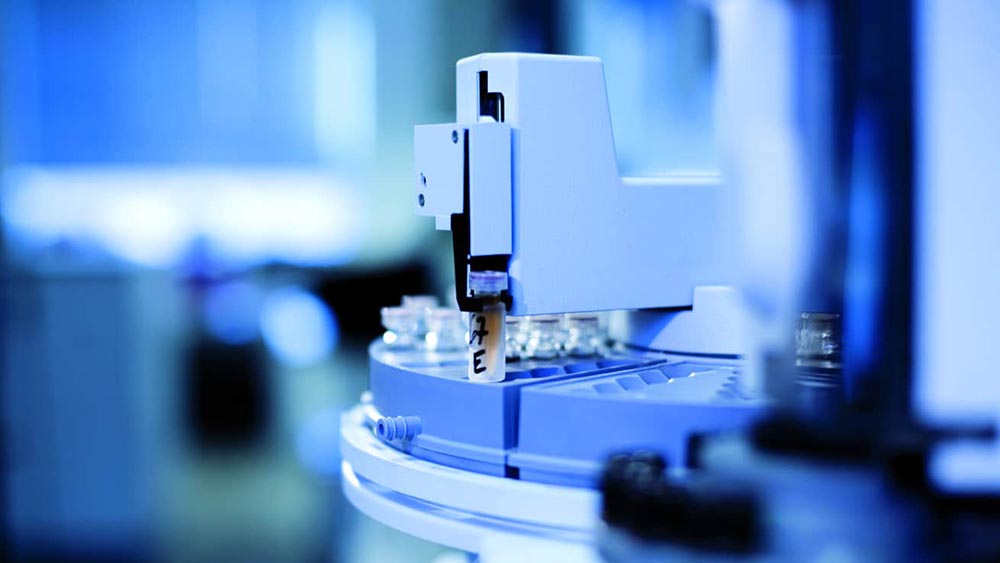I- Wastewater reclamation, Performance and efficiency of the treatment plant
Fouling of the spiral wound UF membrane was prevented by coupling it with the hollow fiber membrane. We continued in this period to monitor all the operational (pressures and flow rates), chemical (pH, EC, BOD, COD, heavy metals), biological (TPC and FC) as well as the physical (TS, TDS, TSS) performance of this unique plant. The database is continuously updated accordingly. From these data, we can conclude that this configuration with the cleaning protocols that were employed is still marinating excellent performance of both the spiral wound and hollow fiber membranes. The infrastructure of plant was also modified so that real close loop configuration was employed. For this purpose, all backwash, brine of the UF and brine of the RO are collected is special tanks and then pumped to the main wastewater collection system to be retreated again. This zero discharge configuration is to be tested for future performance and environmental impact. Still we need to work on introducing a suitable sludge treatment system so that the treated sludge could be collected and tested on land application to improve soil fertility.
In this period, we would like also to report on our attempts to quantify the standard operating procedures and cost for optimizing the cleaning protocol for this unique system.
II- Microbial Removal from secondary treated wastewater using Ultra-filtration and Reverse Osmosis Technologies
By Jehad Abbadi, Rinad Zghari, and Mustafa Khamis
In eastern Mediterranean countries including Palestine, the demand on water is growing rapidly due to rapid population growth, urbanization and socioeconomic development. Both the West Bank and Gaza Strip are facing a series of wastewater and sanitation-related problems: large-scale discharge of untreated wastewater, leaking of collected wastewater from sewer systems and cesspits, water treatment plants that do not function or function only poorly and uncontrolled reuse of untreated wastewater by the irrigation sector. This is causing many diseases related to contaminated drinking water. Statistics from the Center for Disease Control and Prevention (CDC) reveal that there were more than 17,000 cases of water-related illnesses during recent two years in Gaza. However, since many symptoms are often confused with other sicknesses, some researchers feel as many as 25 outbreaks go unreported for every one reported, since many people are exposed to potentially harmful microbes and pesticides, through drinking tap water and taking showers (UNEP, 2003). One reason for these increasing health problems is that it is difficult to treat chlorine effectively, after using it as a disinfectant (Tavakoli, et al., 2005)
The major source of both human and fecal coliform in drinking water in Gaza is the direct and indirect contamination by raw or treated wastewater. Poor treatment allows the coliform to persist. The results of water samples collected from wells and networks in the Gaza Strip by the Ministry of Health indicated that most wells for drinking water were free from organisms. However, some pathogens will survive for only a short time in the water, so the chance of them causing an illness is small. Others may survive for months like guardian, amoeba and cryptosporidium. If the water is not treated or poorly treated for pathogens, a susceptible person will suffer from illness.
One of the most widely used wastewater treatment processes is the activated sludge process. It is a cost effective treatment method under optimal conditions, but bulking can be a chronic problem in some plants (Lim et al., 2004). The use of membranes for wastewater treatment was limited to particular situations due to their high costs (management and plant costs), and suspected to microbial fouling (Lubello et al., 2003). After passing through the UF units, the water can be disinfected by chlorination with its health and environmental consequences (Tavakoli, et al., 2005). Reverse osmosis membranes are capable of rejecting bacteria, salts, sugars, proteins, dyes and other constituents that have a molecular weight greater than 150-250 daltons. RO membranes, like all membranes, are subjected to fouling by “cake layer” formation, (Radcliff and Zarnadze, 2004), but coupling the membrane systems with other technologies such as the pretreatment using activated sludge process and using a further treatment using the reverse osmosis technologies could be the most efficient in treating wastewater efficiently along with rejecting microbes and reducing membrane fouling without chlorinating the final effluent.
The main objectives of this study are:
- To determine the efficiency of hollow-fiber and spiral wound in terms of removing bacteria from waste water.
- To screen a wide range of bacterial species present in wastewater that has certain health significance, and checking their presence in the inlet wastewater and monitoring the efficiency of their removal using our treatment system. The microbes under investigation are: Escherichia coli, Enterococci bacteria, Shigella, Salmonella, in addition to Total coliform bacteria, Fecal coliform bacteria, and Total plate count.
- To perform modeling experiment for bacteria having health significance or found in low count in the inlet wastewater under investigation such as E.scherichia coli, Enterococci, Salmonella, and Shigella as microbial models to be inoculated in a certain count (105 -107 cfu/ml) influent then passed through AST-UF filters (hollow fiber) and Nirosoft- UF (spiral wound) and RO filters and record their rejection efficiency.
III-Efficiency of the membrane technology towards pharmaceutical removal from waste water
By Rafiq R. Karaman, Omar Deeb and Mustafa Khamis
Among the top twenty medicines that have been found to be frequently used in the West Bank and Jerusalem (1) is the well known pain killer agent, aspirin. In addition to its uses as antipyretic and pain killer, aspirin (acetylsalicylic acid) is used once daily in low doses, 75 mg and 100 mg, as prophylactic medicine for the prevention of blood aggregation. The latter (blood aggregation) is the most common cause for heart attack among people over the age of 35 (2-3)
As the first stage in testing the capability and the effectiveness of the membrane plants, kinetic experiments on aspirin have been carried out at different pH values. The kinetic results at room temperature reveal that aspirin undergoes hydrolysis to salicylic and acetic acids via a general base catalyzed process and the rate of the hydrolysis is first order and pH-independent. Chart 1 illustrates the mechanistic pathway of aspirin hydrolysis.
Since our previous results, using UV-visible techniques, on the role of activated sludge in accelerating or inhibiting the rate of hydrolysis of aspirin resulted in a complex and problematic data we have chosen to investigate the sludge process using HPLC techniques (4) where both the reactants and products can be displayed simultaneously. Using the HPLC methods, we have succeeded to establish optimal conditions for the separation of the products from the reactants where the retention time difference between the reactant, aspirin, and the product, salicylic acid, is exceeding 1.4 minutes. In the following subtitles we introduce our preliminary results on the study of hydrolysis of aspirin in the presence and absence of sludge utilizing HPLC methods.
IV- Reuse of treated wastewater in agriculture
By Adnan Rashid, Muhannad Qurie, Jehad Abbadi and Mustafa Khamis
Reuse of treated wastewater in agriculture becomes a routine practice in different parts of the world. However, certain negative environmental impact on soil properties and plant response were observed due to the salt content of the treated wastewater. In this project, we try to investigate the effect of improving water quality on the soil and plant properties. These can be achieved by treating wastewater to RO level and then prepare a mix from RO and Ultra- filtration (UF) treated wastewater which mimic the fresh water characteristics from electrical conductivity point of view. Chickpea (homous) was chosen for this experiment due firstly to its popularity in Palestine and other parts of the world. Secondly, due to our previous experiment with activated sludge irrigation of chickpea this revealed that not all cultivars are responding positively to irrigation with this type of water.
V Isolation of the most promising saponins for future in vivo sex inversion trials in tilapia fish
By Saleh Abu Lafi, Fida, and Mutaz Qotob
Growing mono sex, all-male population of fish is highly desirable in some species in aquaculture, including tilapia, due to higher growth rates of males, better coloration and as men of controlling reproduction. Efforts done to investigate the possibility of natural saponins derived from fenugreek (helbeh) and isolate the most promising saponins for future in vitro sex inversion. The invitro biological activity assay was based on the tritiated water assay using microsomes isolated from ovaries of females fish. Fenugreek saponins by using semi prep HPLC and Assume to be the most promising for masculinzation treatments
VI Cost and tariff for small scale wastewater treatment plants: Comparison between decentralized advanced membrane plants and conventional plants in West Bank.
By Majdi Shaker Shaheen, Mutaz Qutob, and Mustafa Khamis
The aim of this project is to compare the cost efficiency of most medium and large scale wastewater treatment plants in the West Bank in terms of the implemented technology and cost effectiveness to help the decision maker to choose the best and suitable technology for the Palestinian community.
M. Sc. Student: Mr. Majdi Shaker Shaheen, B. Sc. in Physics from Bethlehem University, Bethlehem, Palestine in 2000, worked as a Science teacher for five years in UGU schools in Hebron.
VII Efficiency of the membrane technology in terms of Aspirin removal from wastewater
By Fatimah Ayesh, Rafiq Karaman, Omar Deeb, Mustafa Khamis
As the first stage in testing the capability and the effectiveness of the membrane plants, kinetic experiments on aspirin have been carried out at different pH values. The kinetic results at room temperature reveal that aspirin undergoes hydrolysis to salicylic and acetic acids via a general base catalyzed process and the rate of the hydrolysis is first order and pH-independent. Then Kinetic of the hydrolysis of aspirin in the presence of sludge was studied, finally efficiency of the membrane technology in removal of aspirin and salicylic acid from wastewater was studied all steps were carried out using HPLC.
IIX Project Title:- Effect of the Olive Mill Wastewater(OMWW) on Soil Properties (chemical and physical)
By Ibrahim Ayyad and Jawad Shqier
The olive mills wastewater contains high amounts of organic pollutants and high concentration of phenolic compound that negatively affects soil, underground water. This project aims to study the effect of olive mills wastewater on soil, properties in terms of chemical and physical properties. Research also will address the movement of phenolic compound in soil depth and their effect on the microbial activity of soil.
M. Sc. Student: Mr. Ibrahim Ali Ibrahim Ayyad, a B.Sc. in Chemistry and Chemical Technology from Al-Quds University, Jerusalem, Palestine, 2010.
IX Fate and occurrence of Olive mill at the environment survey and feasible pretreatment alternatives case study “The Southern West Bank”
By Tasneem Al-Jabari, and Jawad Hasan
The study focusing on the olive mill wastewater (OMWW); that result from olive oil production. OMWW is a liquid effluent that has a brown to reddish brown color. It is considered as a great pollutant due to its high organic COD load, and because of the presence of phytotoxic and antibacterial phenolic substances which resist biological degradation. This OMWW confronted to a serious ecological problem in the West Bank due to their toxicity and their seasonal production, and because of the lack of appropriate alternative technologies for treatment. In this project our objective is to determine the quantity & quality of OMWW and their fate in the environment by carrying out a survey on olive mill in Hebron & Bethlehem discrete. The task will include field screening and sampling to make lab analysis of certain parameters (pH, EC, Total solids, COD, oil & grease, polyphenols, volatile phenol, and nitrogen-organic). This allows us to develop new treatment technologies depend on combination between biological and chemical treatment.
Donor: This work is part of the project of Capacity building and institutional reform to obtain integrated administration water and sanitation services in rural communities, Funded by the Austrian Development Agency in cooperation with the Palestinian Water Authority.


